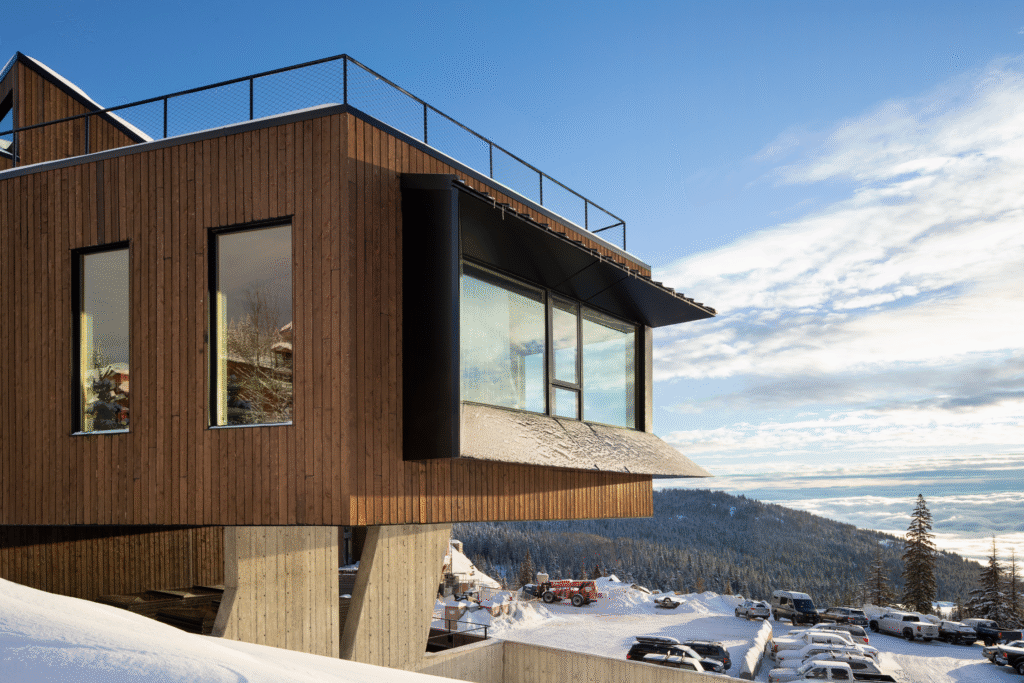
Why Mass Timber Resorts Save Cost, Build Faster, Delight Investors, and Care for the Planet
Mass Timber resorts are changing how we design and build hospitality projects. With faster on-site installation, lower total cost, lighter structures needing fewer foundations, strong investor appeal, and clear environmental benefits, Mass Timber resorts are a smart choice for modern development.
What is Mass Timber?
Mass Timber is a family of engineered wood products like CLT (cross-laminated timber), GLT, NLT, and LVL. These panels and beams are factory-made, precise, strong, and ready to assemble on site like a kit. For resorts, this means cleaner sites, quicker builds, and warm natural spaces guests love.
Why Mass Timber resorts save cost
- Off-site precision reduces waste and rework.
- Shorter build time cuts prelims, site overheads, and financing costs.
- Fewer wet trades and simpler logistics lower labour spend.
- Integrated structure-and-finish: exposed timber can act as both structure and final ceiling, saving materials.
- Smaller cranes and less heavy plant reduce hire costs.
- Leaner fire and acoustic detailing with proven systems avoids over-spec.
- Price certainty: factory orders lock pricing early, reducing volatility.
Faster installation and smoother programmes
- Prefabricated panels arrive numbered and ready to install.
- Dry construction means fewer weather delays.
- Repeatable room modules speed up floors and wings—ideal for resort blocks and lodges.
- Early enclosure lets MEP and interior teams start sooner.
- Quiet, clean sites improve neighbour and guest relations for phased resort upgrades.
Lighter structures, fewer foundations
- Mass Timber is much lighter than concrete, often 20–30% of the dead load.
- Smaller loads mean fewer piles, shallower pads, or thinner slabs.
- Lower groundworks cost, less excavation, and reduced spoil cart-away.
- Easier builds on poor soils, coastal sites, islands, and sensitive landscapes.
- Slimmer foundations speed approvals in areas with strict environmental controls.
Better for investors
- Faster time to revenue: earlier opening dates improve IRR and NPV.
- Capex discipline: off-site procurement reduces cost creep.
- Brand premium: guests value natural materials and biophilic design, lifting ADR and occupancy.
- Lower operational carbon helps meet ESG targets and access green finance.
- Future-proof asset: strong market story for exit, refinancing, or REIT inclusion.
Environmental benefits guests notice
- Wood stores carbon; Mass Timber locks it into the building for decades.
- Lower embodied carbon than steel or concrete.
- Quieter construction, fewer deliveries, and less dust.
- Renewable material from certified forests supports responsible forestry.
- Warm, natural interiors support wellbeing—great for spa, retreat, and eco-resort brands.
Safety, fire, and durability—addressing the big questions
- Fire: Mass Timber chars predictably, protecting its core; tested systems meet modern codes.
- Moisture: factory coatings, site sequencing, and temporary protection manage weather.
- Acoustics: proven floor build-ups deliver hotel-grade sound separation.
- Compliance: early engagement with building control and fire engineers streamlines approvals.
Design flexibility for resort experiences
- Wide spans for lobbies, restaurants, and wellness spaces.
- Modular room grids for villas, lodges, and hotel wings.
- Hybrid options with concrete cores or steel where needed.
- Rich finishes: exposed timber ceilings, beams, and feature walls.
Practical steps to get started
- Run an early-stage Mass Timber feasibility and carbon study.
- Choose a design team experienced in timber and modular coordination.
- Lock structural grid and MEP penetrations early for factory production.
- Engage suppliers early to secure slots and price certainty.
- Plan logistics for rural or island sites—lighter components help.
Use cases that shine in resorts
- Chalet and lodge clusters
- Spa and wellness pavilions
- Restaurant and event halls with long spans
- Guestroom blocks with repeatable layouts
- Elevated boardwalks and viewing platforms in sensitive habitats
Key metrics to track
- Programme reduction versus concrete baseline
- Foundation volume and cost savings
- Embodied carbon per m² (A1–A5)
- Capex variance and contingencies
- Speed to revenue and IRR uplift
Conclusion
Mass Timber resorts offer a rare blend of cost savings, speed, investor value, lighter foundations, and environmental gains. For coastal, mountain, forest, and island destinations, Mass Timber is a clear, modern path to building beautiful spaces guests love—faster and with a smaller footprint.